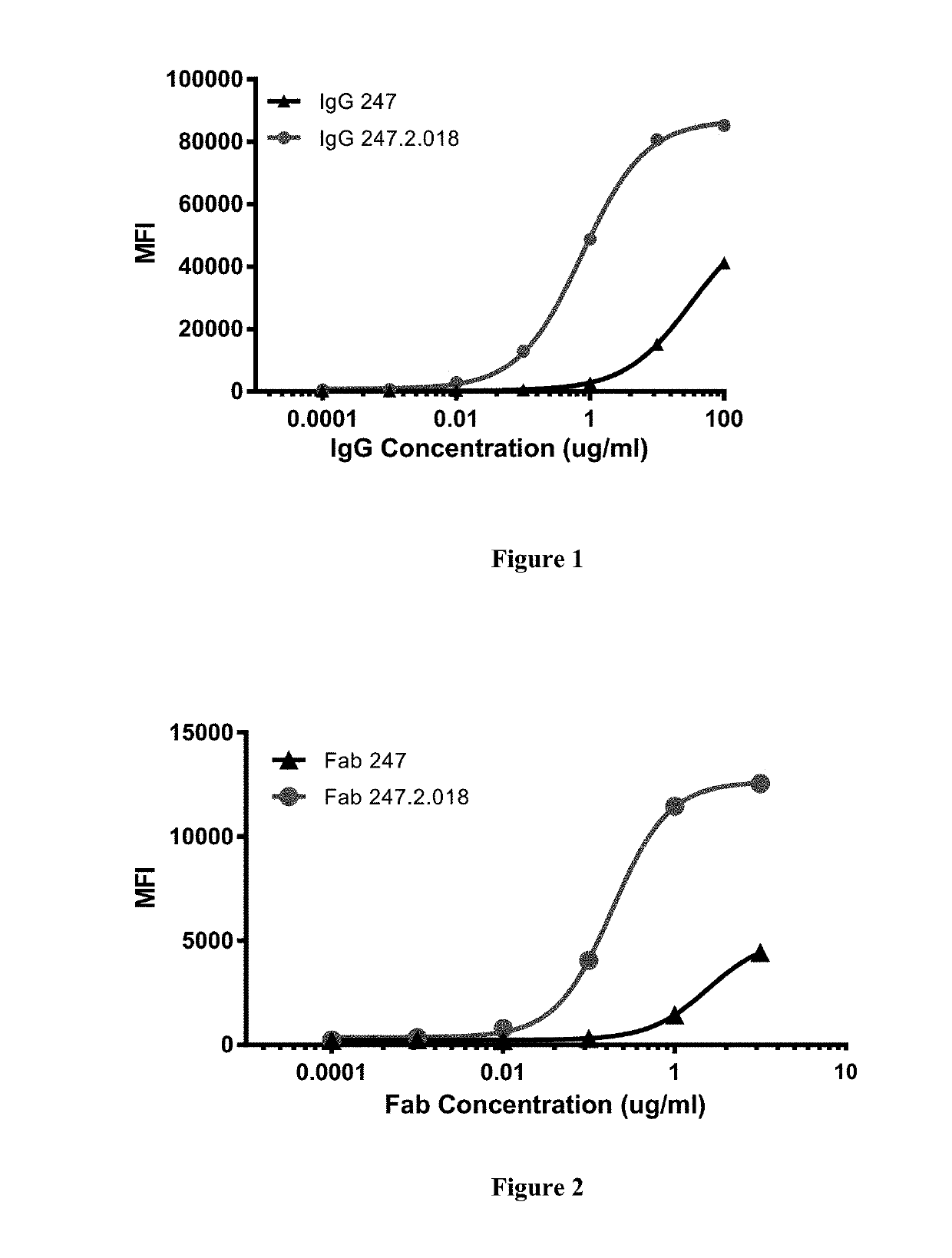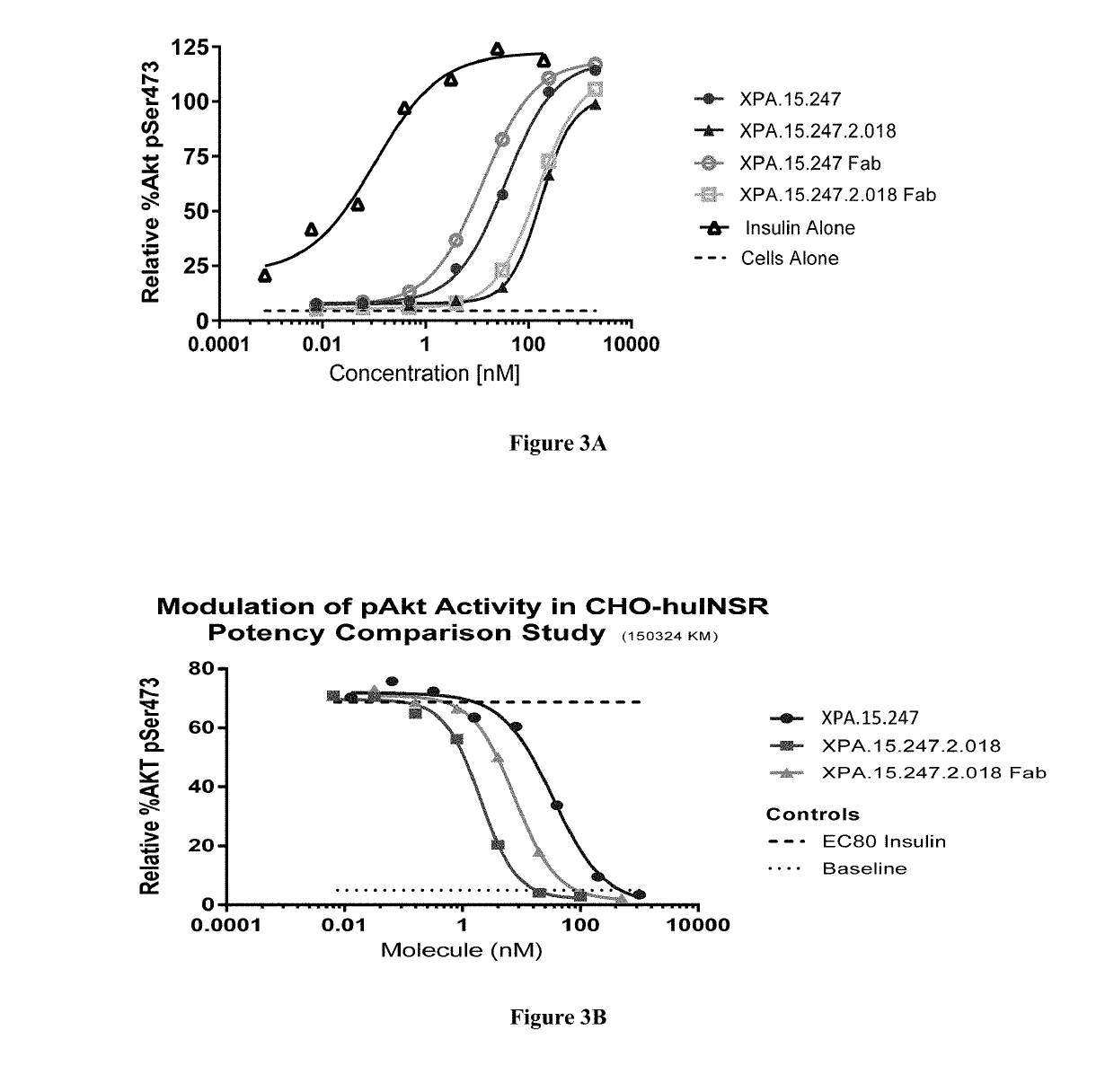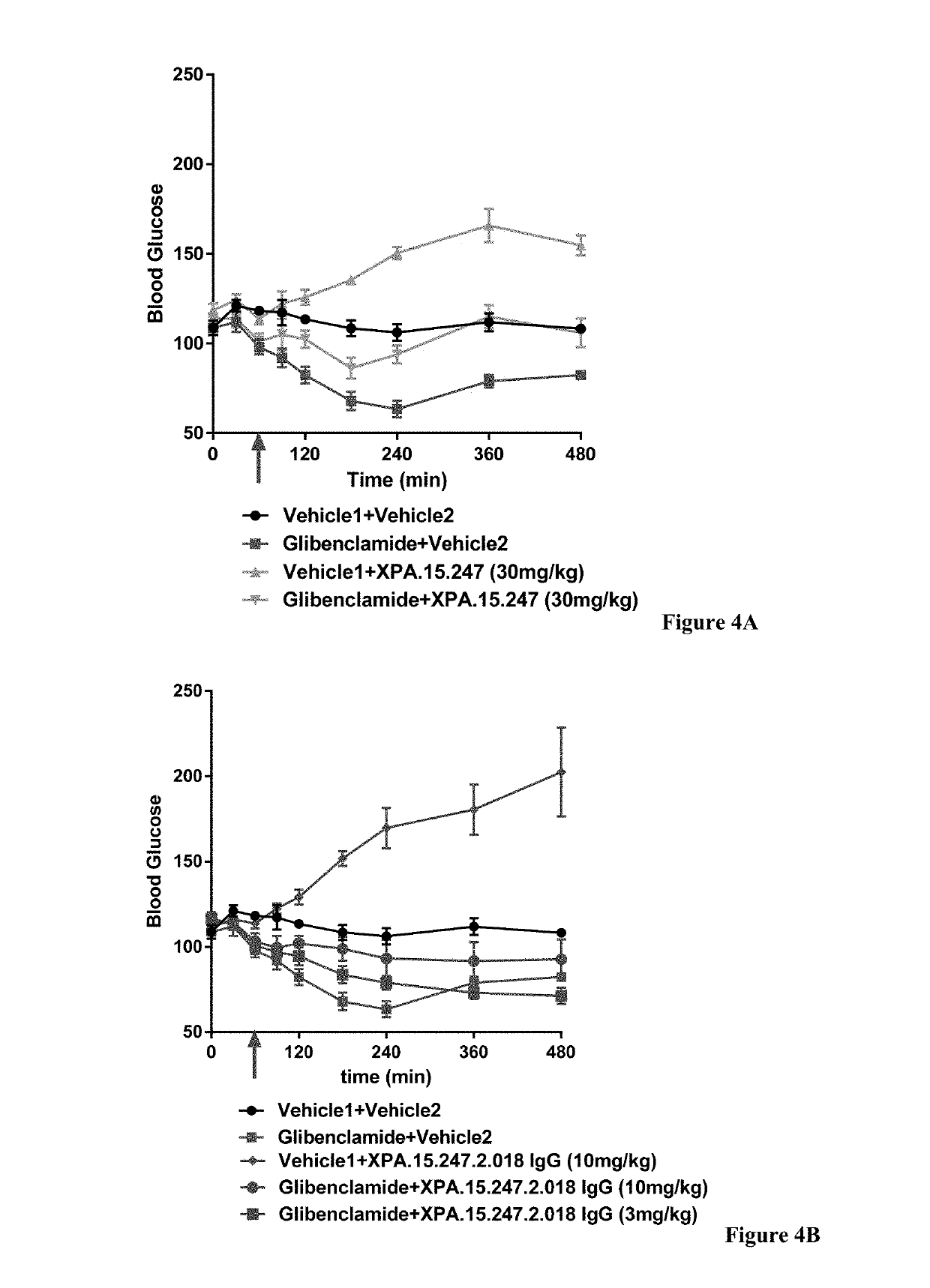Antibody fragments against the insulin receptor and uses thereof to treat hypoglycemia
an antibody fragment and insulin receptor technology, applied in the field of negative modulator antibody fragments, can solve the problems of recurrent hypoglycemia, significant morbidities including epilepsy and cerebral damage, and hypoglycemia or low blood sugar, and achieve the effect of preventing the occurrence of hypoglycemia
- Summary
- Abstract
- Description
- Claims
- Application Information
AI Technical Summary
Benefits of technology
Problems solved by technology
Method used
Image
Examples
example 1
Construction of XPA.15.247.2.018 Variant
[0348]To construct the XPA.15.247.2.018 antibody and Fab variants, the heavy chain and light chain of XPA.15.247 (see WO2011 / 038302, incorporated herein by reference) were amplified and mutated using standard site-directed mutagenesis protocol using a Stratagene kit. The residues mutated in the VH were Aspartate 54 to Serine in CDR2 as it can cause isomerization with the neighboring residue Glycine. In CDR3, methionine 105 was mutated to Phenylalanine as it is a potential oxidation site. The third residue mutated was Valine 107 to Tyr. All these three residues were changed to germline (D54S, M105F, V107Y), which was intended to improve manufacturability, but surprisingly improved the affinity to the INSR and potency of the variant compared to the parent antibody. The XPA.15.247 variant heavy chain is termed XPA.15.247.2 (SEQ ID NO: 2).The heavy and light chain sequences of XPA.15.247 (SEQ ID NO: 1 and 3) and XPA.15.247.2.018 (SEQ ID NO: 2 and ...
example 2
Binding Assays
[0350]In order to determine the ability of the modified Fab to bind to the insulin receptor, binding assays were carried out.
[0351]CHOK1 cells over-expressing the INSR human, rat, and cyno orthologs were plated in 96-well round bottom plates (Costar, cat#3799) at 25,000 cells per well. To assess parent antibody binding, on the day before the assay, the cells were washed with PBS, resuspended at 1×106 cells / mL in “Starvation Medium” containing RPMI 1640 (Invitrogen), 2 mM L-Glutamine, and 0.5% BSA, and incubated for 16-20 hours in a 37° C., 5% CO2 incubator, and then incubated with concentrations of antibody ranging from 0.001 to 100 ug / ml in 50 ul FACS buffer (PBS+0.5% BSA+0.1 mM sodium azide) for 40 minutes at 4° C. For Fab staining, cells were stained with a secondary antibody, mouse anti-c-myc IgG (Roche, Basel, Switzerland). After washing twice with FACS buffer, cells were then stained with either goat anti-human IgG Allophycocyanin (Jackson Immuno Research, West G...
example 3
Effects of Anti-INSR Modulating Antibodies on INSR-Induced Phosphorylation of AKT
[0356]The INSR is a tyrosine kinase that undergoes autophosphorylation after insulin binding and subsequently catalyzes the phosphorylation of intracellular proteins such as insulin receptor substrate (IRS) family members, Shc, and Gab1. Each of these proteins serves as a docking site for the recruitment of downstream signaling molecules resulting in the activation of various signaling pathways including the PI(3)K / AKT and MAP kinase (MAPK) pathways. These pathways ultimately coordinate to regulate cell growth and differentiation, gene expression, glycogen, protein and lipid synthesis, and glucose metabolism.
[0357]The effects of a test antibody on signaling via the INS / INSR complex can be measured by assessing the ability of the antibody to augment insulin-induced serine or tyrosine phosphorylation of specific intracellular proteins, such as AKT and MAPK (ERK1 / 2), which are specific to the INSR signalin...
PUM
 Login to View More
Login to View More Abstract
Description
Claims
Application Information
 Login to View More
Login to View More - R&D
- Intellectual Property
- Life Sciences
- Materials
- Tech Scout
- Unparalleled Data Quality
- Higher Quality Content
- 60% Fewer Hallucinations
Browse by: Latest US Patents, China's latest patents, Technical Efficacy Thesaurus, Application Domain, Technology Topic, Popular Technical Reports.
© 2025 PatSnap. All rights reserved.Legal|Privacy policy|Modern Slavery Act Transparency Statement|Sitemap|About US| Contact US: help@patsnap.com



